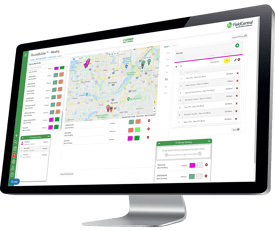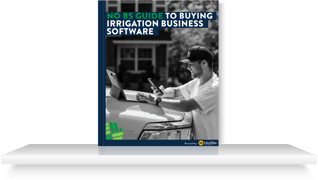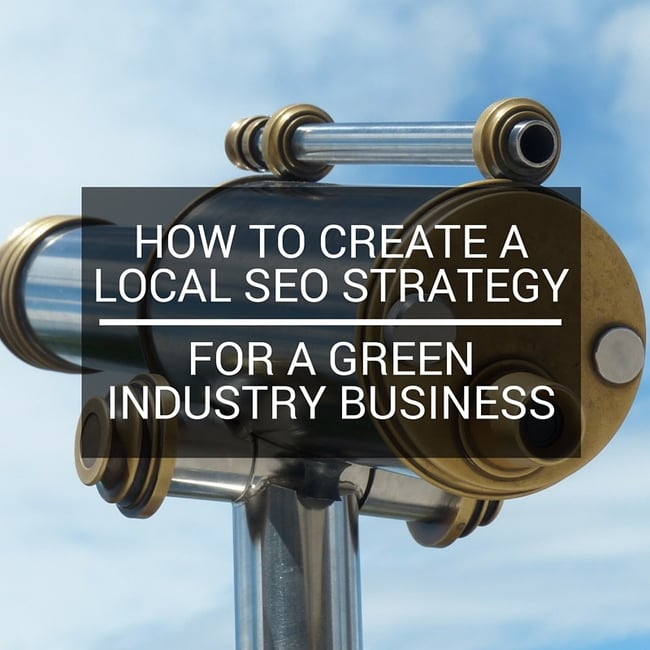SEO is no longer a concept that only webmasters, designers and web agencies work with. Today, search engine optimization can be worked on by anyone with a website and basic knowledge of how to edit their online presence. And it is becoming increasingly important for green industry businesses because of how consumers now find field service providers. We held a webinar in which our Marketing Manager, Chad Reinholz, discussed how to use local SEO to grow green industry businesses(click here if you want to view the webinar).
For the most part, there are a number of tasks that can be performed that are simple to execute, but powerfully associated with how you rank within search engines. To start out with, local SEO is the practice of creating and maintaining a great web presence for your website within a specific area. If you’re a lawn maintenance company in St. Paul, Minnesota, you don’t need to rank highly for the keyword “lawn maintenance”, instead, you want to rank highly for when people search for “lawn maintenance company in St. Paul” or “Best St. Paul lawn maintenance”.
The reason that local SEO is so important is that there has been a fundamental shift in the past few years in how consumers find field service provider's. Customer referrals are still the largest source of quality leads for green industry businesses, however online searches are a very close second and have only been growing. Here is how to create an effective local SEO strategy for your green industry business:
Research
The first step in developing a local SEO strategy is to determine where you currently stand and how you stack up against your competitors. To figure that out, start listing out all the possible keywords for your area. So you can combine the services you provide and the territory you service. There are a number of tools you can use to help determine what your top keywords are. Take your keyword list and run a few searches for them and see what you come up with. Who is ranking highly for local results?
Tip: If you use the Google Chrome browser, search in Incognito mode to get true search results. If you don’t, your search results could be skewed.
Targeting Keywords
Once you’ve identified a larger list of keywords that could work be a good fit for your website, start whittling them down to your top ten based on how much traffic they’ll bring to your site. Figure out which keywords should be easy to rank for, for instance “irrigation services in Maplewood” would be a great one if you were in that area.
When you have that keyword identified, you can then create targeted content around it. You could create a webpage that talks about irrigation services in your area, or a testimonial page from customers or create content, like a blog post or video, about local water management goals for insert your city here. It doesn’t need to be a high quality, expensive video, but make sure it is useful to the people who you are hoping to gain as customers.
Review Usability
Usability has become an increasingly important factor in how well your website ranks within search engines. Google and other search engines are able to recognize when a visitor clicks on a site from their search and then exits quickly. The bounce rate of a site can indicate multiple factors, but it is a very good indication of your website’s usability. More than 50% of Google searches come from mobile devices, that needs to be taken into consideration. Make sure you have a responsive website design.
Is your site set up in a way that makes sense? Do you have menus in the right places and are they structured in a way that visitors know right away how to use them? Is it designed for modern browsers and mobile devices? Also, do you have high quality, unique and credible local content?
Tip: If you built your website yourself, get a second opinion. One place that you can turn to is LawnSite.com to receive some feedback. They have an entire forum dedicated to websites. Many of their members are experts on design, usability and the green industry.
Link-Building
In the past, link-building was the most important factor in where a page would rank in searches. There also used to be a lot of “gaming the system” when backlinks were the most important factor in rank. It is still important today, but the focus now is more on quality than quantity.
Quality link building is now the process of having relevant links to your website. For local SEO purposes, you can turn to local organizations that you belong to - like the Chamber of Commerce. If you partner with any businesses, see if they would be open to a reciprocal arrangement in which you’d create a link for their site as well.
One great way to gain local links is by “creating” news related to your business. If you’re a landscaper or lawn maintenance business, host a Best Landscape Award or Best Lawn Award for your area. Approach local businesses and newspapers to see if they would help in the promotion.
Measure
The final part of your high-level SEO strategy is to determine what metrics and measurements you’re going to use to figure out if you’re successful. First, plug something like Google Analytics into your website, if you haven’t already(here is a guide on how to do that). That will help you collect data that shows how successful you’ve been. Then, determine what metrics are important. If possible, report weekly on your metrics so you can see how they’re going up (or down) over time. Some high level things you can measure and report:
- Web page visits and search visits on a weekly basis. These are easy to retrieve from Google Analytics and will provide a general overview of what impact your SEO changes had on your overall traffic.
- Analyze what impact it’s had on sales. To a certain extent, web traffic is a vanity metric. If you’re getting a lot of unqualified traffic – meaning people who aren’t likely to buy – your SEO isn’t generating a return on your investment. Track the source of every lead you get so you can see what activities are generating the most sales – and which have a positive ROI.
Rinse and Repeat!
SEO is an ongoing practice. It isn’t a set-it-and-forget-it activity. You need to be doing these things consistently in order to see the greatest return!
Don’t be discouraged if you don’t see results right off the bat. SEO is something that takes time. There isn’t an exact number for when you can expect to start seeing results, but after a few months, providing you’re sticking to a steady plan, you should see the needle start to move for you. Stick with it and you should not only see an increase in your website traffic, but also an increase in sales!
Want to learn a bit more about SEO and how to rank higher? Download your free eBook!









